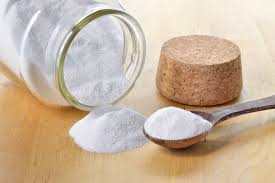When you engage in high-intensity exercise, your body needs to produce energy without using enough oxygen. The generation of energy anaerobically leads to the production of lactic acid. The burn you feel in a muscle during strength training is usually because of a buildup of lactic acid. The muscle soreness is your body's way to slow you down until it repairs those muscle fibers you have torn in your last workout session. Luckily, there're ways to reduce muscle soreness and lactic acid buildup.
Workout Tips to Reduce Lactic Acid
In order to learn how to reduce lactic acid, you need to understand how to make certain changes to your workout. Here are some tips to help you get better results out of every workout session.
1. Keep Your Body Hydrated
 It is important to keep your body hydrated when you exercise and sweat a lot. Drinking more water is also beneficial for anyone concerned about feeling a burn during or after a workout. The reason is that water dissolves lactic acid, so you may not experience a burn when you drink enough water throughout the day. Do not wait to drink until you feel thirsty. Ideally, you should be drinking 8-10oz of water before your workout and drink another 8oz of water every 20 minutes during your workout.
It is important to keep your body hydrated when you exercise and sweat a lot. Drinking more water is also beneficial for anyone concerned about feeling a burn during or after a workout. The reason is that water dissolves lactic acid, so you may not experience a burn when you drink enough water throughout the day. Do not wait to drink until you feel thirsty. Ideally, you should be drinking 8-10oz of water before your workout and drink another 8oz of water every 20 minutes during your workout.
2. Get More Oxygen
The simple way to do it is to breathe deeply during your workout session. The burn you feel is not just because your body produces lactic acid, but it is also because your body demands more oxygen, which is not readily available. Inhaling through your mouth and exhaling through your mouth while exercising can provide more oxygen to your muscles and prevent muscle soreness.
3. Do Not Skip Workouts
 You need to be regular when you really want to prevent muscle soreness and lactic acid buildup. The ability of your body to tolerate lactic acid buildup increases when you work out frequently. Your fitness level determines how much glucose your body needs to burn during a session – the more glucose it burns, the higher the production of lactic acid. The best thing is to exercise frequently during the week, but have at least two rest days every week. Moreover, you should aim for a gradual increase in the intensity of your workouts to prevent excessive production of lactic acid.
You need to be regular when you really want to prevent muscle soreness and lactic acid buildup. The ability of your body to tolerate lactic acid buildup increases when you work out frequently. Your fitness level determines how much glucose your body needs to burn during a session – the more glucose it burns, the higher the production of lactic acid. The best thing is to exercise frequently during the week, but have at least two rest days every week. Moreover, you should aim for a gradual increase in the intensity of your workouts to prevent excessive production of lactic acid.
4. Change the Intensity of Your Workouts
You may consider decreasing the intensity of your workout if you are overly concerned about a burn. You feel that burn because your body tries to keep you from overexerting yourself. Just try to slow down while engaging in activities like biking, running, and using an elliptical to make a difference. Similarly, you may want to lower the weight you lift and the number of reps per set to make weight training more effective. Weight training can be extremely stressful and causes micro tears in your muscles, which leads to muscle soreness. Therefore, it is important to increase your intensity at a slow pace to help your body get used to your training program.
5. Stretch before Workout
 To learn how to reduce lactic acid, you need to understand the importance of stretching before any workout. Stretch your body thoroughly before you start your workout. This helps prepare your body for lactic acid release, and also warms up your body and prevents injuries. Be sure to stretch your ankles, calves, back, quads, neck, shoulders, and arms to approach a workout in the right way.
To learn how to reduce lactic acid, you need to understand the importance of stretching before any workout. Stretch your body thoroughly before you start your workout. This helps prepare your body for lactic acid release, and also warms up your body and prevents injuries. Be sure to stretch your ankles, calves, back, quads, neck, shoulders, and arms to approach a workout in the right way.
6. Cool Down Your Body
Leaving the gym soon after you complete your last set is not a great idea. A sudden stop to your workout session is only going to leave the body hanging, and you will be dealing with muscle soreness the next day. A few minutes on a treadmill after a workout session may help cool down your body and reduce lactic acid buildup.
Dietary Tips to Reduce Lactic Acid
Along with making some workout changes, you can also make dietary changes to understand how to reduce lactic acid buildup. Here are a few tips to follow:
1. Increase Your Magnesium Intake
 Providing your body with an increased amount of magnesium helps your body produce more energy. Magnesium facilitates the transfer of energy to your muscles during an exercise session, which in turn prevents excessive buildup of lactic acid. Some of the best sources of magnesium include Swiss chard, spinach, turnip greens, green beans, pinto beans, collard greens, naval force beans, lima beans, and kidney beans. Tofu is also a great source of magnesium.
Providing your body with an increased amount of magnesium helps your body produce more energy. Magnesium facilitates the transfer of energy to your muscles during an exercise session, which in turn prevents excessive buildup of lactic acid. Some of the best sources of magnesium include Swiss chard, spinach, turnip greens, green beans, pinto beans, collard greens, naval force beans, lima beans, and kidney beans. Tofu is also a great source of magnesium.
2. Get More Fatty Acids
 You should eat foods rich in fatty acids to limit the production of lactic acid. By increasing your intake of fatty acids, you keep your body from relying too much on lactic acid during a workout session. Your diet should contain chilly water fish like mackerel and salmon to get essential fatty acids. You can also consume nuts and seeds, like flaxseed and walnuts, as well as plant oils, such as corn oil, soybean oil, olive oil, and sunflower oil.
You should eat foods rich in fatty acids to limit the production of lactic acid. By increasing your intake of fatty acids, you keep your body from relying too much on lactic acid during a workout session. Your diet should contain chilly water fish like mackerel and salmon to get essential fatty acids. You can also consume nuts and seeds, like flaxseed and walnuts, as well as plant oils, such as corn oil, soybean oil, olive oil, and sunflower oil.
3. Try Baking Soda
 Wondering how to reduce lactic acid? You can reduce the lactic acid buildup by mixing baking soda in water and drinking it regularly. Baking soda helps eliminate the acid from the muscles and makes you feel better. Regular consumption of baking soda may also help you exercise harder for longer. To make a solution, first check your weight in kilograms. Now, multiply the figure with 0.3g to know how much baking soda you need. Mix it in 12oz of water and drink. You can add some lemon juice to make it taste better.
Wondering how to reduce lactic acid? You can reduce the lactic acid buildup by mixing baking soda in water and drinking it regularly. Baking soda helps eliminate the acid from the muscles and makes you feel better. Regular consumption of baking soda may also help you exercise harder for longer. To make a solution, first check your weight in kilograms. Now, multiply the figure with 0.3g to know how much baking soda you need. Mix it in 12oz of water and drink. You can add some lemon juice to make it taste better.
4. Consume More Vitamin B
 You can also increase your vitamin B intake to facilitate the transportation of glucose around the body. With easy availability of glucose, your body is less likely to rely on lactic acid during exercise. You can get it from foods such as peas, grains, green veggies, hamburger, fish, dairy, eggs, and poultry; or you can take vitamin supplements to increase your intake of vitamin B.
You can also increase your vitamin B intake to facilitate the transportation of glucose around the body. With easy availability of glucose, your body is less likely to rely on lactic acid during exercise. You can get it from foods such as peas, grains, green veggies, hamburger, fish, dairy, eggs, and poultry; or you can take vitamin supplements to increase your intake of vitamin B.
